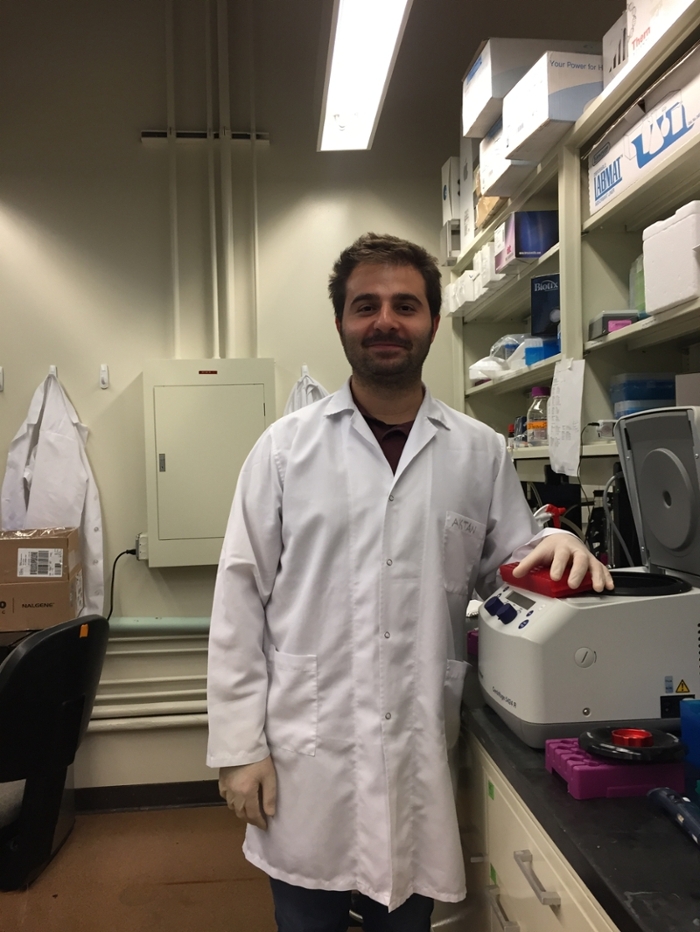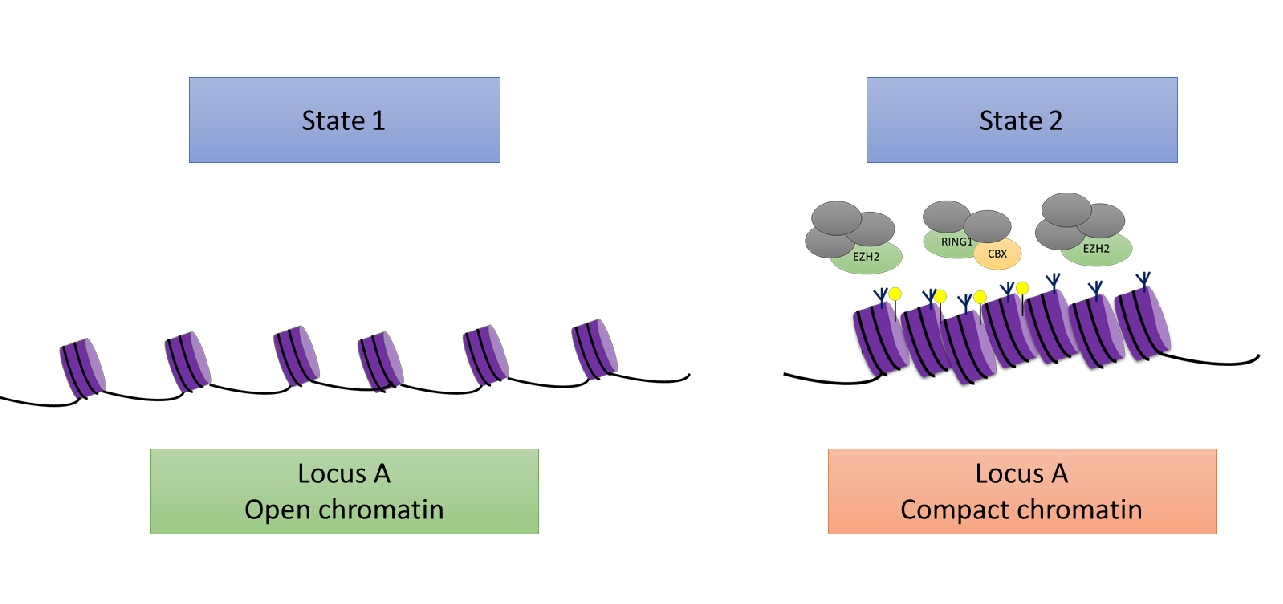
Aktan Alpsoy

Training Group:
Medicinal Chemistry and Molecular Pharmacology
Mentor / Lab:
Emily C. Dykhuizen
Specific Research Area / Project:
Polycomb repressor complex 1 in health and disease
Undergraduate Institution:
Middle East Technical University (Ankara, Turkey)
Lab / Personal work-related websites:
Personal LinkResearch Profile:
In eukaryotic systems DNA -or the genome- is packaged into protein-dense units called chromatin. The basic unit of the chromatin, nucleosome, is composed of a core that is made up of histone proteins and DNA wrapped around that core. This compact structure is important to protect large eukaryotic genomes and fit it into a limited space, the nucleus. Besides these, the chromatin structure is crucial for dynamic regulation of fundamental events such as DNA replication, transcription, and repair of damaged DNA.
Although the genome sequence of a particular multicellular organism is the same for all of its cells there are remarkable differences among the cell types: A neuron has the same DNA sequence as a liver cell, but they have distinct morphologies and biochemical activities even though they arise from the same single cell, the zygote. The “differentiation” from single cell to a variety of lineages is mainly dictated by the spatial and temporal regulation of gene expression, i.e. turning on or off the expression of some genes at a particular time on “some” cells. This dynamic regulation is important for progression through the developmental stages, forming specialized tissues or organs and adaptation to changing internal or environmental conditions. The prevalent gene expression program at a particular state is fundamentally established by chromatin-related factors. The factors that regulate the gene expression pattern or set a particular program include transcription factors, RNA molecules, histones, DNA or histone modifying proteins and other chromatin binding proteins. Aberrations in these regulators are generally associated with defective cellular or organismal homeostasis, e.g. developmental defects and carcinogenesis.
In this picture, my research focuses on the activities of chromatin modifying protein complex known as polycomb repressive complex 1. This protein complex together with its companion complexes can repress the gene expression by providing a compact, transcriptionally non-permissive chromatin environment. The particular question I am pursuing is how this protein complex is localized to a specific genomic region to repress the gene expression. Elucidating the recruitment mechanisms will provide useful information to designate drug targets since dysregulated targeting and activity of the complex have been associated with multiple disease states.
Polycomb repressor complexes repress gene expression possibly through compacting the chromatin. They are important regulators of genome-wide gene expression profiles. The signal can be the switch in differentiation state or intracellular / extracellular cues. However, exact mechanism(s) for the targeting of the complexes to a particular site is not completely elucidated.

About Me:
After obtaining my degree, I want to continue in academia, the sole place that I see myself as successful. I love teaching, I love it even more when I notice I am learning, too. Seeing people are getting engaged, and taking steps forward always motivates me. I love doing research, contributing to scientific knowledge with small bricks. Here at Purdue, meeting brilliant professors, graduate students, research assistants around, I am even further motivated to my ultimate goal: To be a productive scientist.
Awards:
- Purdue University, Interdisciplinary Life Sciences Program (PULSe) Scholarship
- Fulbright Scholarship
- University of Queensland (Australia) Winter Research Scholarship
- German Cancer Research Center (DKFZ) Summer School Fellowship
- The Scientific and Technological Research Council of Turkey (TUBITAK) graduate / undergraduate scholarship
- Erasmus Student Placement Grant
Publications:
- Alpsoy, A., Gündüz U. (2015). Protein kinase D2 silencing reduced motility of doxorubicin-resistant MCF7 cells. Tumor Biology, 36(6), 4417-26
- Alpsoy, A., Yasa, S., Gündüz, U. (2014). Etoposide resistance in MCF-7 breast cancer cell line is marked by multiple mechanisms. Biomedicine & Pharmacotherapy, 68(3), 351–5.
Presentations:
- Alpsoy A, Dykhuizen EC. RNA-Mediated Interactions of Polycomb Repressor Complex 1. Midwest Chromatin and Epigenetics Meeting, Grand Rapids, MI (June 2016) [Poster Presentation]
- Alpsoy A, Wendt MK. The roles of fibronectin in breast cancer progression. Purdue University Life Sciences’ (PULSe) Spring Reception, West Lafayette, IN (April 2015) [Poster presentation]
Leadership:
- Guide in “Science-in-Schools”
- Member of Turkish Auto Sports Federation as licensed marshal
- Student Profiles
- Aktan Alpsoy
- Andrew Asberry
- Carlos A. Brito-Sierra
- Clairissa Corpstein
- Hao Chen
- Rachel Foguth
- Logan Ganzen
- Veronica Heintz
- Ethan Hillman
- Kathryn Jacobson
- Steven McKenzie
- Vinay Menon
- Jasmine Moore
- Alexandr Pak
- Raquel Peron
- Runrun Wu
- Sudhanshu Shekhar
- Janiel Ahkin Chin Tai
- Yu Tang
- Chelsea Theisen
- Samantha Tinsley
- Nicole Vike
- Ravi Yadav

